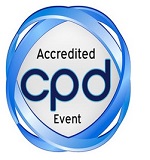
Stevenson Many
Institut D’enseignement Chretien Siloe Medical Technology, Haïti
Title: Emerging infectious disease
Biography
Biography: Stevenson Many
Abstract
An infectious disease is a disease caused by the transmission of microorganisms including viruses, bacteria, parasites, fungus. Infection is the term for an infectious disease in general or contamination by germ. The contamination is the penetration of the germ in an organism. The infectious disease is the branch of medicine for infectious diseases. The specialist is an infectiologue. Emerging infectious diseases periodically worried epidemiologists and health authorities because of their health impacts, economic and socio current policies. The trichomonases are sexually transmitted diseases determined by a flagellate protozoan Trichomonas vaginal. Among infected women, it causes malodorous vaginal discharge and pus. The man becomes contaminated and can infect healthy carrier partners. Giardia is an intestinal disease caused by a flagellate protozoan Giardia lamblia. Infectious diseases are transmitted in different ways: by direct contact, by the digestive way, by the respiratory way by the gastrointestinal tract, by animal bites or stings. cost for antibiotics is low still 700 million infections were found every year with the mortality rate of 0.1% normally and in severe conditions it is about 25%.global Clinical Bacteriology market is valued at $6,727.29 million in 2014 and is expected to grow at a CAGR of 13.03% between 2014 and 2019. Increasing disease burden of infectious diseases and increased funding for healthcare expenditure are the important growth drivers for this market during the forecast period. Infectious diseases are responsible worldwide for 17 million deaths per year, or one third of the deaths and 43% of deaths in developing countries (against 1% in industrialized countries). Prevention of infectious diseases is divided into three parts: avoid infection, use a condom to reduce the risk of transmission of sexually transmitted diseases. Strengthen the immune system and take preventative treatments (The simple hygiene measures are the best preventive treatment : hand washing to prevent the transmission of food infectious.

